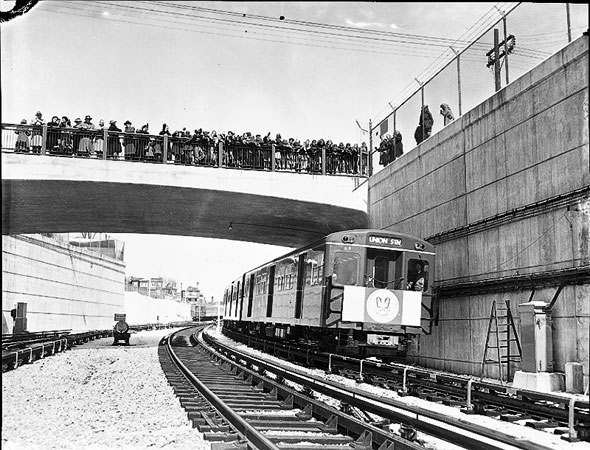
Exactly 60 years ago this Sunday, Toronto mayor Allan Lamport and Ontario premier Leslie Frost gripped a ceremonial lever in front of an eager crowd at Davisville station. When they pushed it forward, a subway signal set up for the gathered photographers changed from red to green. The Yonge line, Canada's first subway, was officially complete.
The TTC's in-house brass band struck up a lively tune as two trains of dignitaries took the inaugural trip north to Eglinton, the end of the line, then rode south to Union. The subway, eight years in the making, opened to the public at exactly 1:30 p.m. Tokens were three for a quarter.
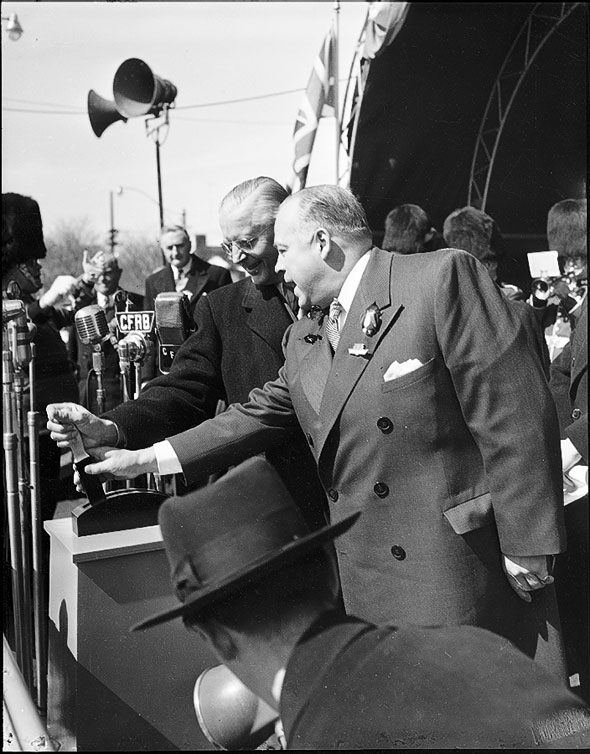 Conceived as one of a pair of subway lines, the other a streetcar tunnel under the downtown portion of Queen Street,
construction on the Yonge subway started in 1949, three years after a
public referendum gave the project the green light (although financial
worries almost killed both projects.)
Conceived as one of a pair of subway lines, the other a streetcar tunnel under the downtown portion of Queen Street,
construction on the Yonge subway started in 1949, three years after a
public referendum gave the project the green light (although financial
worries almost killed both projects.)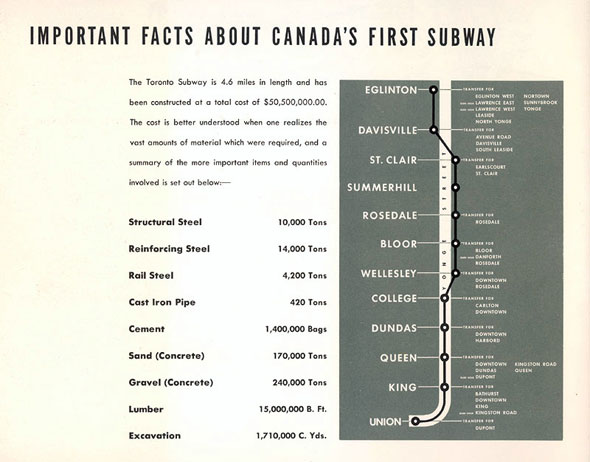
By digging a relatively shallow 7.4 km trench and covering it with heavy wooden planking, the city was able to keep Yonge street and its busy streetcars running while construction continued below. Dynamite blasts, pile drivers, backhoes, and shovels dislodged and removed some 1.3 million cubic metres of soil and rock in a winding strip from Union to Eglinton Avenue.
It took just under 5 years, 24,000 tonnes of steel, and 1.4 million bags of cement to build the physical structure of the line and much more to wire up the signals, install turnstiles, and erect collector booths.
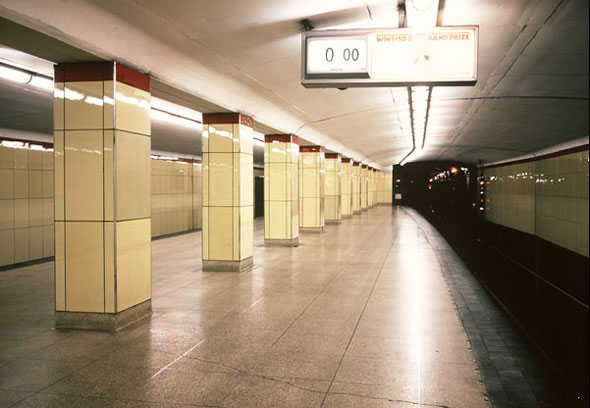
Sadly, black and white pictures of the era rob the Yonge line of its original vibrant aesthetic. The first fleet of 104 "Gloucester" subway trains, built in England at a cost of $7.8 million and shipped to Toronto through the ports of Montreal and Halifax, were painted an startling red. The first map that showed the various surface connections along the line was a bright royal blue and tan.
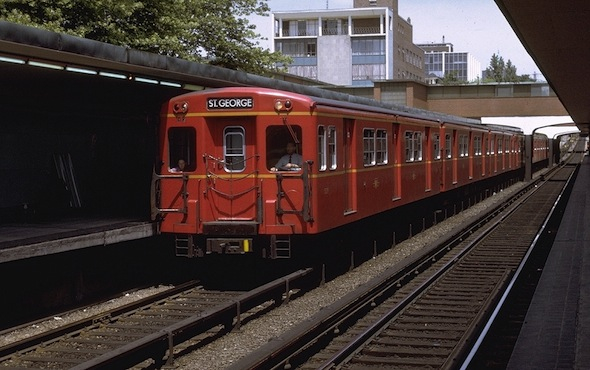
The subway platforms, free from any embellishment due to financial constraints, were decorated using colourful glass tiles that have now mostly been replaced. Each of the 12 stops was finished in one of three colours - Pearl Grey, English Egg Shell (pale green,) or Primrose (soft yellow) - but were gradually transitioned to the current hodgepodge due to the tendency of the tile to shatter like glass. "Pearl Grey" Eglinton is the only station that has kept its Vitrolite wall fixtures.
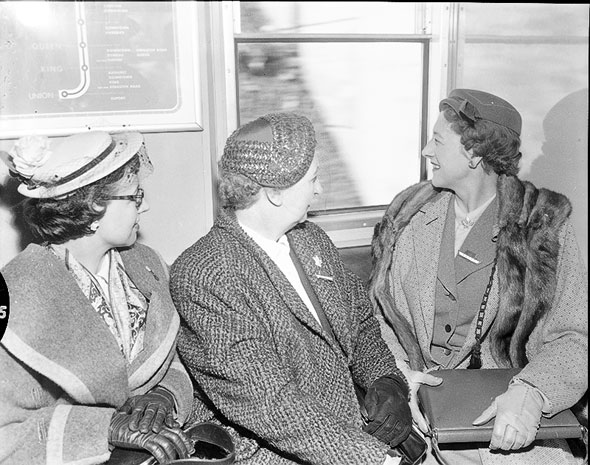
Six decades after that first run, the Yonge line is still the busiest public transit route in the country. Without an outlet valve in the coming decades, it will remain so. In 1954, building the first subway the city so badly needed wasn't without difficulty or money concerns.
As a strangely incredulous CBC television new report from 1954 said: "Toronto got itself a subway - really!"
CBC news report about the opening of the Yonge line
Documentary (with some sound issues) about the construction of the subway
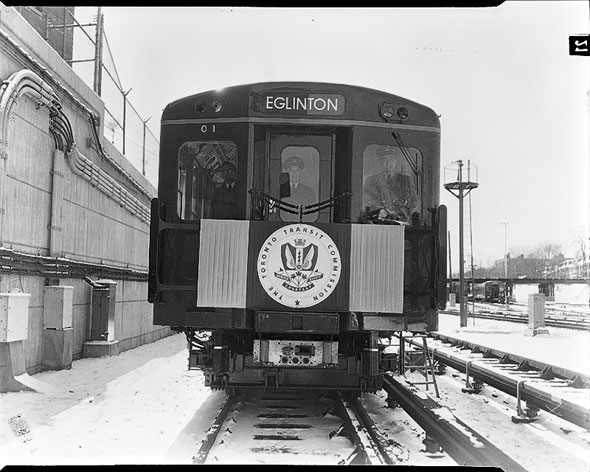
The first train heads north to Eglinton
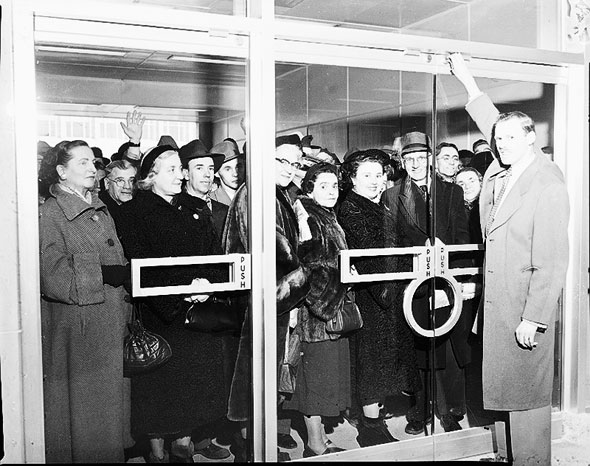
A TTC employee prepares to let the first members of the public onto the subway.
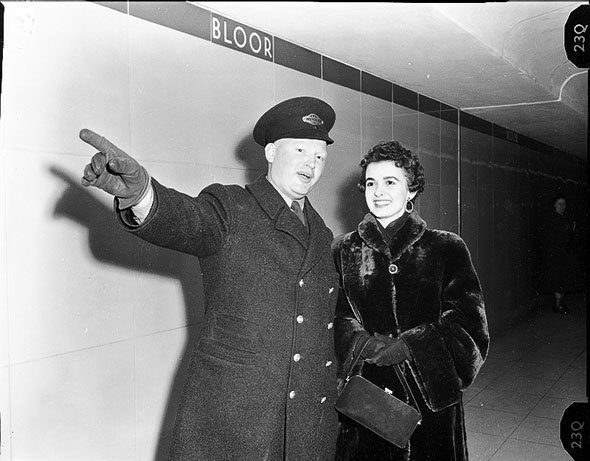
A TTC guide directs a woman at Bloor station.
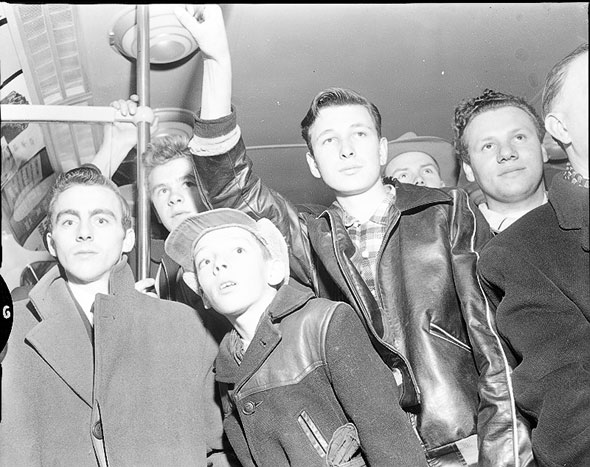
Kids on the first public subway ride.
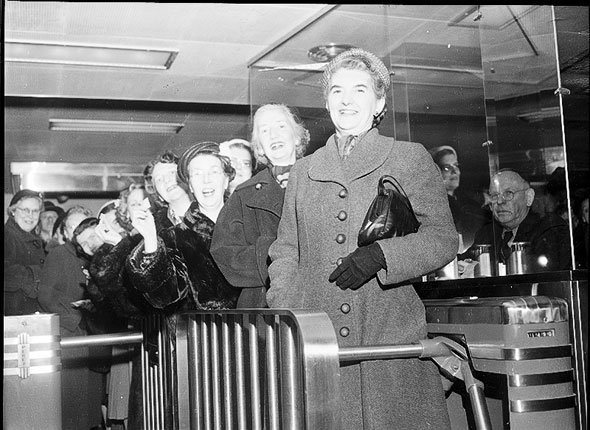
A group of women pay their fares.
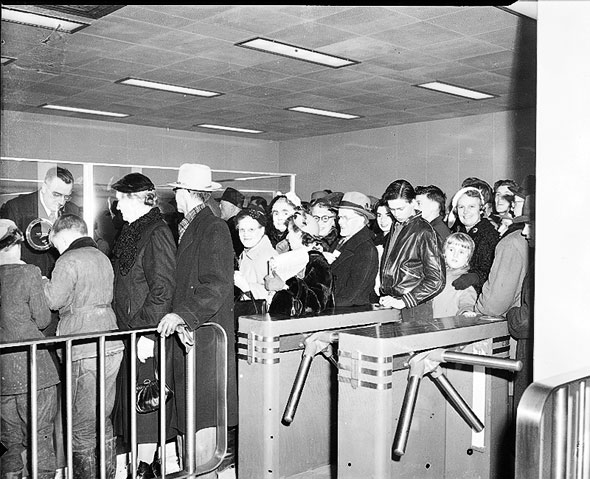
Crowds at the turnstile on opening day.
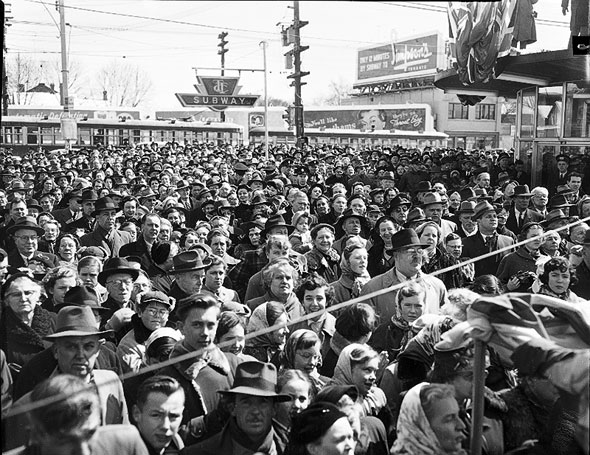 Hundreds gathered outside Davisville station for the opening ceremony.
Hundreds gathered outside Davisville station for the opening ceremony.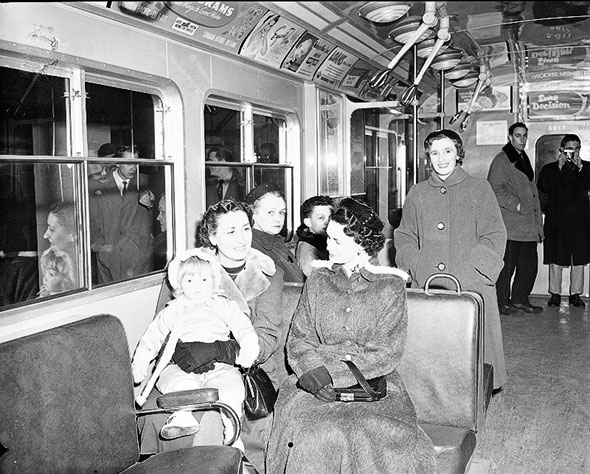 Dignitaries aboard the first train
Dignitaries aboard the first train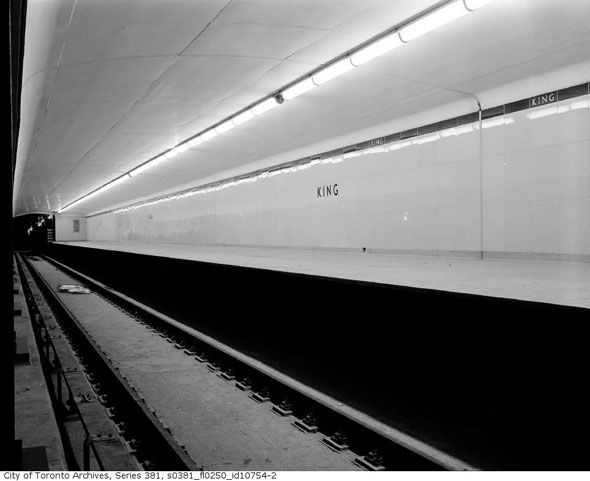
King station shortly before the completion of the subway
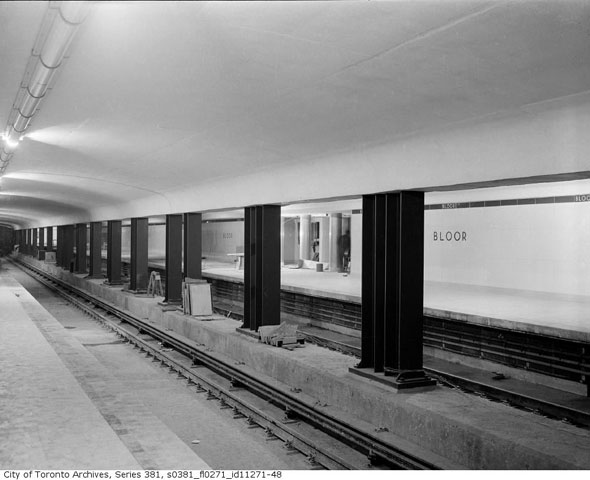
Bloor station before widening and the arrival of the Bloor-Danforth line
Please share this
No comments:
Post a Comment